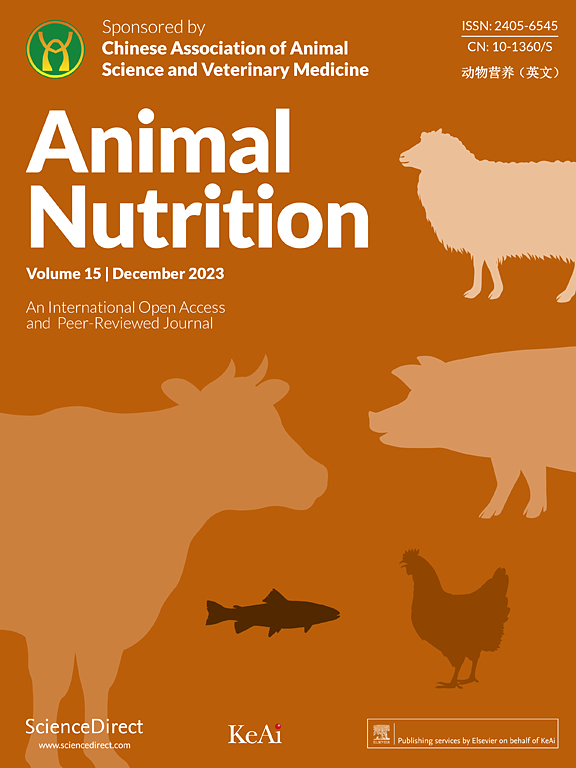提高猪和家禽植物性饲料添加剂有效性的战略技术
IF 6.1
1区 农林科学
Q1 AGRICULTURE, DAIRY & ANIMAL SCIENCE
引用次数: 0
摘要
植物性饲料添加剂(PFA)是一组多样化的植物源性材料,在过去几年中在食品和农业工业中获得了相当大的兴趣和使用。这是由于禁止使用抗生素生长促进剂,以及大量具有几种被认为有益特性的天然化合物。PFA具有广泛的生理影响特性,包括促进生长,刺激采食量,食欲和内源性分泌物,抗病毒,抗菌,抗氧化和免疫调节活性。然而,尽管PFA及其植物化学成分在体外已被证明具有潜力,但一些技术限制限制了它们在单胃饮食中的使用和商业化。本文介绍了提高植酸(PFA)在猪和家禽饲粮中生物利用度的策略,包括胶囊化、饲料酶、发酵、植物原物质的鸡尾酒和混合、PFA与有机酸的混合和饲料酶包合。这篇综述文章的目的是考虑到新的科学证据来补充知识体系。此外,综述了为提高PFA的生物可及性和生物利用度,促进PFA在猪和家禽营养中的应用而开发的一些科学技术。本文章由计算机程序翻译,如有差异,请以英文原文为准。
Strategic technologies to improve phytogenic feed additive efficacy in pigs and poultry
Phytogenic feed additives (PFA) are a diverse group of plant-derived materials that have gained considerable interest and use over the last few years in the food and agriculture industry. This is due to the banning of the use of antibiotic growth promoters, as well as an abundance of natural compounds with several perceived beneficial properties. PFA boast a wide range of physiology influencing properties including growth enhancement, stimulating feed intake, appetite and endogenous secretions, antiviral, antimicrobial, antioxidant, and immunomodulatory activities. However, despite the demonstrated potential of PFA and their phytochemical constituents in vitro, several technical limitations restrict their use and commercialisation in monogastric diets. Strategies to improve the bioavailability of phytic acid (PFA) in pig and poultry diets are described, including encapsulation, feed enzymes, fermentation, cocktails and blends of phytogenics, blending PFA with organic acids and feed enzyme inclusion. The objective of this review article is to complement the body of knowledge considering new scientific evidence. In addition, the review describes some scientific techniques developed to improve the bioaccessibility and bioavailability and facilitate the application of PFA in pig and poultry nutrition.
求助全文
通过发布文献求助,成功后即可免费获取论文全文。
去求助
来源期刊

Animal Nutrition
Agricultural and Biological Sciences-Animal Science and Zoology
CiteScore
7.40
自引率
3.20%
发文量
172
审稿时长
12 weeks
期刊介绍:
Animal Nutrition encompasses the full gamut of animal nutritional sciences and reviews including, but not limited to, fundamental aspects of animal nutrition such as nutritional requirements, metabolic studies, body composition, energetics, immunology, neuroscience, microbiology, genetics and molecular and cell biology related to nutrition, and more applied aspects of animal nutrition, such as raw material evaluation, feed additives, nutritive value of novel ingredients and feed safety.
 求助内容:
求助内容: 应助结果提醒方式:
应助结果提醒方式:


